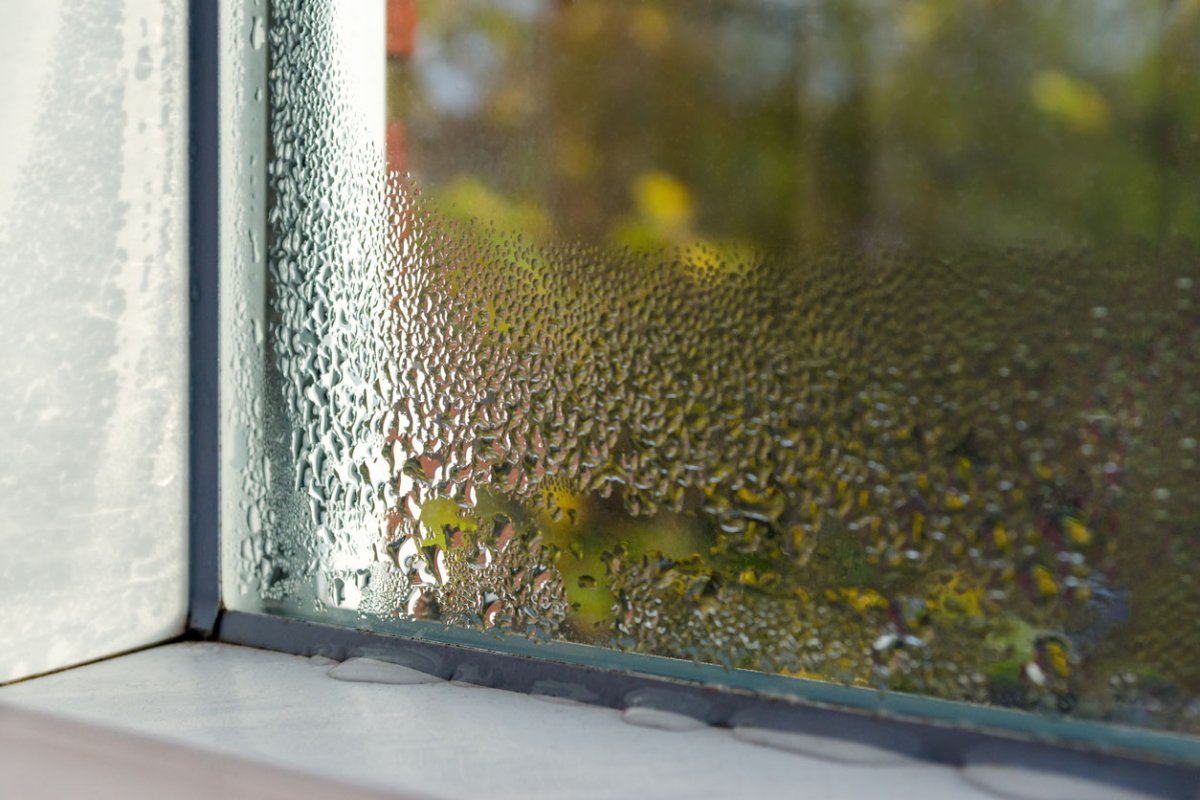

We may earn revenue from the products available on this page and participate in affiliate programs. Learn More ›
Figuring out why your house is so humid can take some troubleshooting, but it’s critical to address the problem. The ideal indoor relative humidity of a home is between 30 and 50 percent. Anything over 50 percent is considered high. Beyond 65 percent is a recipe for mold growth and high humidity levels can cause discomfort, sleep issues, and health problems, and excessive humidity can even cause damage to a home.
“High humidity can make you feel sluggish and uncomfortable, and it can aggravate allergies or asthma,” says David Lewis, owner of Mission AC & Plumbing in Houston, Texas. “If your indoor air feels humid, your home’s paying the price right along with you,” says Lewis. Read on for telltale signs of high humidity in your house, what causes it, and how to return your home to a comfortable indoor humidity level.
Effects of High Humidity on a House
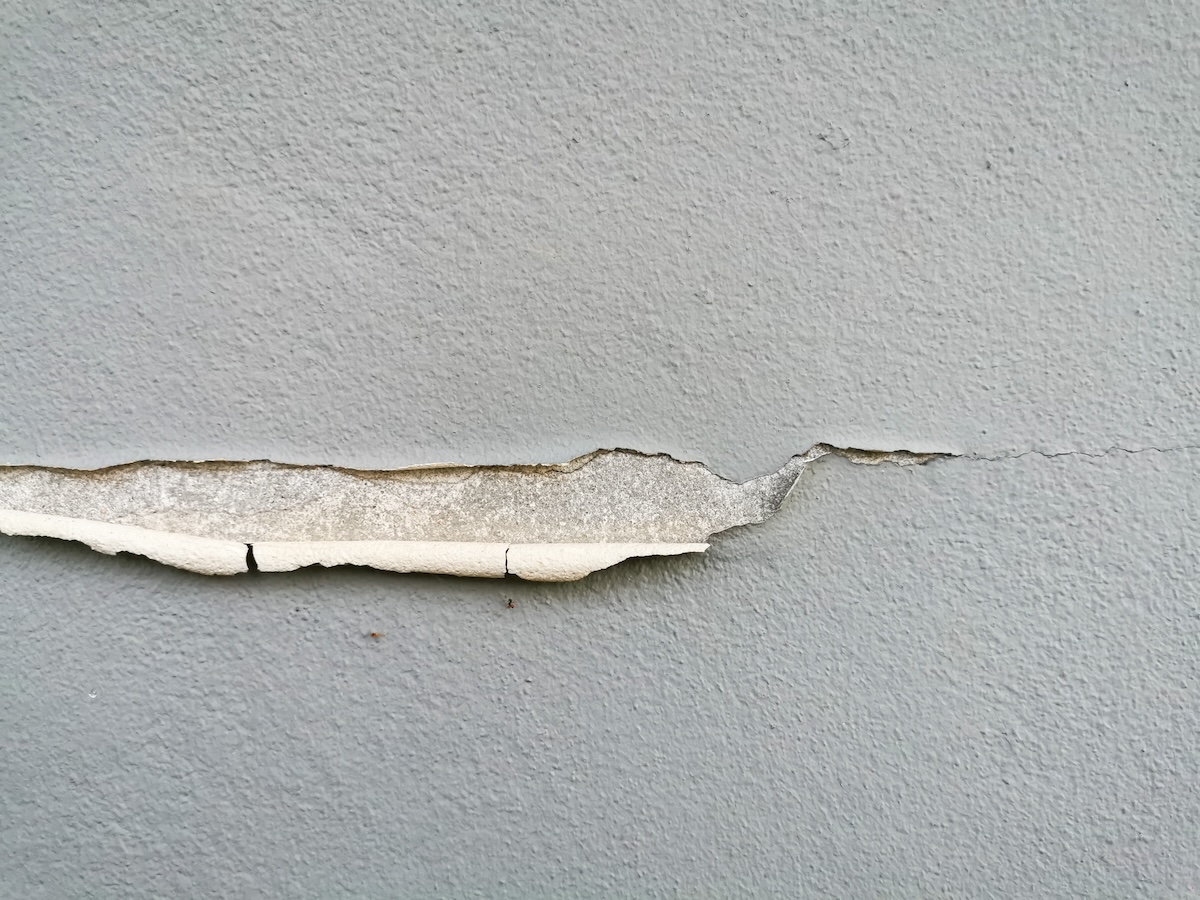
Both a home’s inhabitants and its materials can show the negative effects of high humidity over time. “What makes this so tricky is that the damage doesn’t always show up immediately,” says Michael Rubino, mold and air quality expert, podcast host, and founder of HomeCleanse, a national clean indoor air company. “By the time you notice signs like warped floors or peeling paint, the underlying materials may already be compromised,” he adds.
As moisture damages floors or walls, cracks and pockets might allow moisture into deeper surfaces and promote mold growth. “Black mold, in particular, is a serious concern and can have long-term health effects,” notes Tim Alagushov, co-founder and COO of IRBIS Air, Plumbing & Electrical in San Jose, California. This can lead to costly repairs and remediation. For example, high humidity can warp flooring to the point it needs replacing and lead to mold in walls. Excess moisture can even damage drywall or insulation. Finally, failing to control high humidity can even add to energy costs, since the AC has to work harder.
Potential problems related to high humidity include:
- Warped or buckled wood flooring
- Mold on and in walls
- Attraction of unwanted pests like cockroaches or dust mites
- Damage to drywall and insulation that includes weakening and creating packets for mold growth
- Peeling paint
- Forcing the AC to work harder, which decreases efficiency and costs more
Signs Your Home Is Too Humid
At the ideal relative humidity of 30 to 50 percent, you should feel comfortable and your home should show no ill effects from overly dry or humid air. But if you see the following signs, your home is too humid. Telltale signs of excess moisture include:
-
- A musty smell from the AC
AC running constantly without cooling the space
- A musty smell from the AC
-
- Clammy-feeling air
-
- Noticeable increase in allergy symptoms
-
- Swelling wood floors, sticky doors or cabinets, soft or misshapen window frames
-
- Increased cockroach activity
-
- Peeling wallpaper or visible bubbling, peeling, or flaking of paint
-
- Discoloration on ceilings and walls
-
- Visible mold or mildew growth, especially in corners of the bathroom or around vents and returns
-
- Moisture signs from warm, moist air on cooler surfaces, such as condensation on windows or mirrors. “If the windows are fogging up, that’s a major red flag,” says Lewis.
-
- Visible condensation on pipes or plumbing fixtures like toilets
Reasons Why Your House Is so Humid
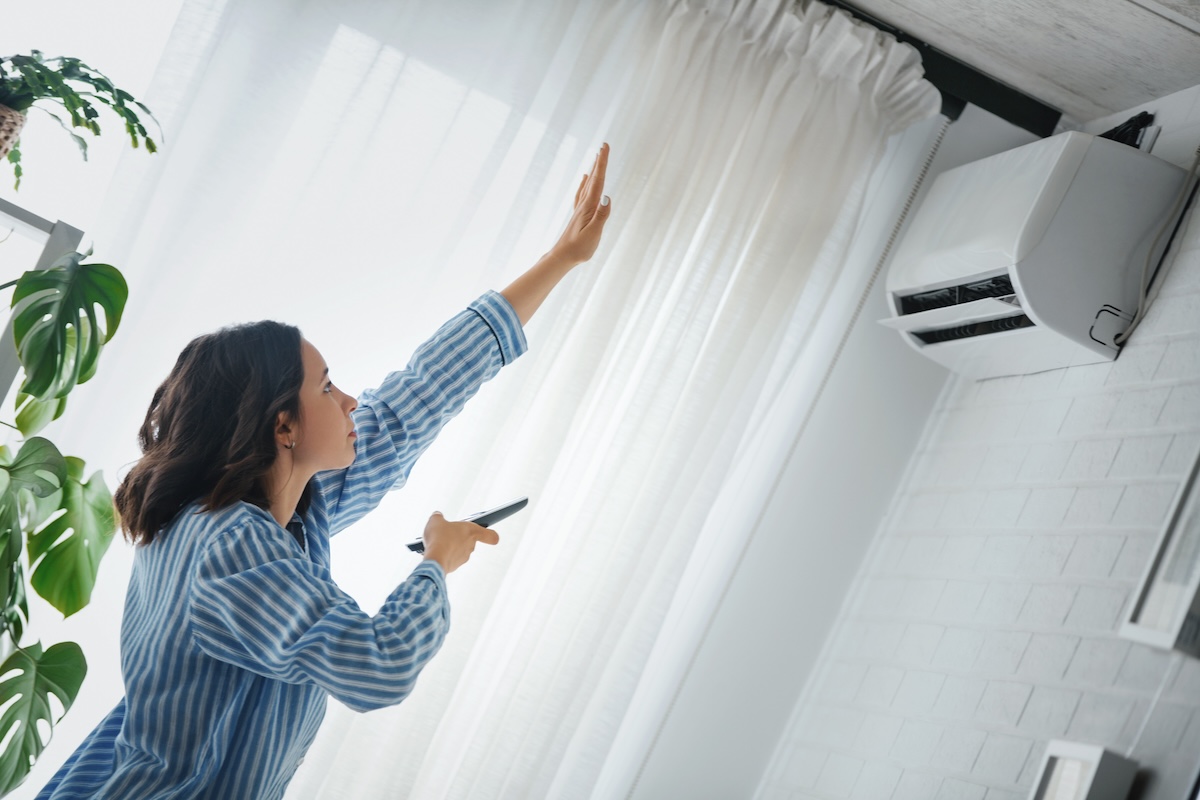
Ultimately, high humidity levels have many different causes: climate, daily activities, HVAC issues, and poor ventilation are just a few of the culprits. Depending on the cause, solutions can range in cost from free behavior changes like opening windows more often to replacing an old exhaust fan. More expensive solutions include buying a whole-home dehumidifier and potentially repairing or replacing HVAC systems.
The Local Climate
Climate can contribute to high humidity in a house. If it’s exceptionally humid outside, chances are it’s going to be muggy inside a home. The changing seasons and temperature can significantly contribute to rising indoor humidity levels and an uncomfortable indoor environment. Some parts of the country are more prone to high humidity than others, and inside humidity levels tend to be higher in regions with muggy climates.
In addition to outdoor moisture, location and orientation can lead to high humidity inside a house. “For example, homes near the water or shaded areas with little sun (such as down in a canyon) often retain more humidity,” says Alagushov. If you’re unsure whether you need to lower humidity inside your home, look at the EPA’s recommendations on controlling indoor humidity levels that includes some tips for managing humidity in your home during times of high outdoor humidity.
Poor Ventilation
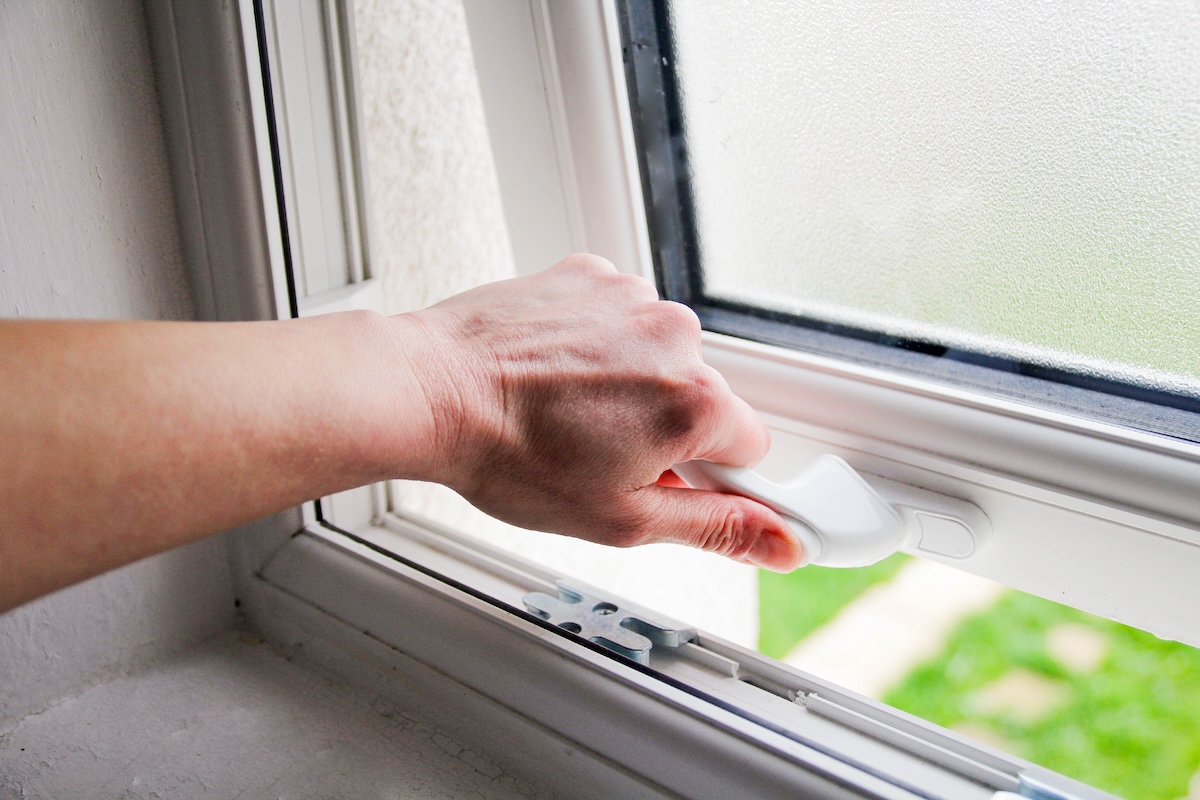
Adequate ventilation can help control a home’s humidity level, impacting health and a home’s structural integrity. Rubino and Alagushov agree that poor ventilation is the biggest contributor to indoor humidity. “Airtight homes with no way for moisture-rich air to escape are a recipe for issues,” Rubino says.
If you think poor ventilation is behind humidity-related discomfort or health issues, start by opening windows more often. Keep windows open for extended periods, particularly in high-moisture rooms such as bathrooms and kitchens. Rubino suggests you check and potentially upgrade fans in bathrooms and kitchens, along with inspecting attic and crawlspace ventilation. You might consider asking a ventilation professional to install a whole-home ventilation system.
An Outdated or Poorly Functioning AC Unit
Refrigerated air does more than cool a space; it also removes some moisture from the air. Leaky ducts can contribute to poor humidity control and an old or poorly operating unit that no longer properly cools also fails to manage humidity. With proper maintenance, HVAC systems last 15 to 25 years on average. If you haven’t had your system serviced in some time, call for an inspection and AC repair if necessary and continue recommended maintenance for the life of the unit. In addition, check that your unit has a functioning fan setting.“Run your AC fan even when the system’s off to keep air moving and manage moisture,” says Lewis.
In the drier Southwest, evaporative coolers are common in homes. They introduce humidity, which can be helpful relative to outdoor moisture, but moisture can build up if you don’t properly ventilate your home while the unit runs. That excess moisture might not be enough to damage materials, but it can cause biological pollutants like bacteria, mildew, and mold to grow. Be sure to open windows to increase airflow and service your unit as recommended.
An Oversized AC Unit
Seth Mapp, general manager at Champion & Nash in Houston, Texas, cites an improperly sized HVAC system as “the biggest contributor to high relative humidity in residential homes.” Though an undersized unit won’t cool as adequately on hot days, a unit that is too large for the space will not remove humidity as it should. “Modern HVAC systems need a minimum of 20 minutes of running time before they even begin to remove latent energy, which is what dehumidifies the air,” says Mapp.
However, an oversized unit might cool a room or home too quickly, running for only 10 to 15 minutes on a hot day before it abruptly shuts down. This is commonly referred to as short cycling, and a professional can diagnose the problem as part of the HVAC inspection cost. While the cost of a replacement HVAC might seem high at first, investing in a smaller unit might make a home more comfortable and energy efficient in the long run.
Leaks in the Plumbing System
“Standing water raises humidity levels and encourages mold growth,” says Rubino. An interior plumbing leak from a bathroom or kitchen sink can increase moisture in the air. It’s important to check pipes often for cracks and corrosion and fix any issues to prohibit the growth of harmful biological pollutants.
While some leaks are easy to spot, others are not. Look for wall discoloration, bubbling paint or wallpaper, a dripping sound, or a musty smell. If you note any of these signs, it’s time to contact a professional for plumbing leak repair. No matter the location, be sure to clean up spills or pooled water as soon as possible, says Rubino.
Poor Insulation
Poor insulation can allow uncomfortably cold air into a home during the winter, canceling out the efforts of a furnace. The same principle applies to humidity. When outdoor humidity is high, that damp air can make its way inside via gaps not sealed properly. This also means that cool, air-conditioned air can escape instead of circulating indoors.
So while it might seem like the central AC is not blowing cold air, it actually might be working overtime (and driving up energy costs, too). Check old insulation, especially in the attic and basement, and replace any that has sagged or is missing to reduce excess moisture in the air. Also replace any damaged caulking and weatherstripping around doors and windows throughout the home to restore the home to a more ideal inside humidity level.
Everyday Activities like Cooking, Washing, and Showering
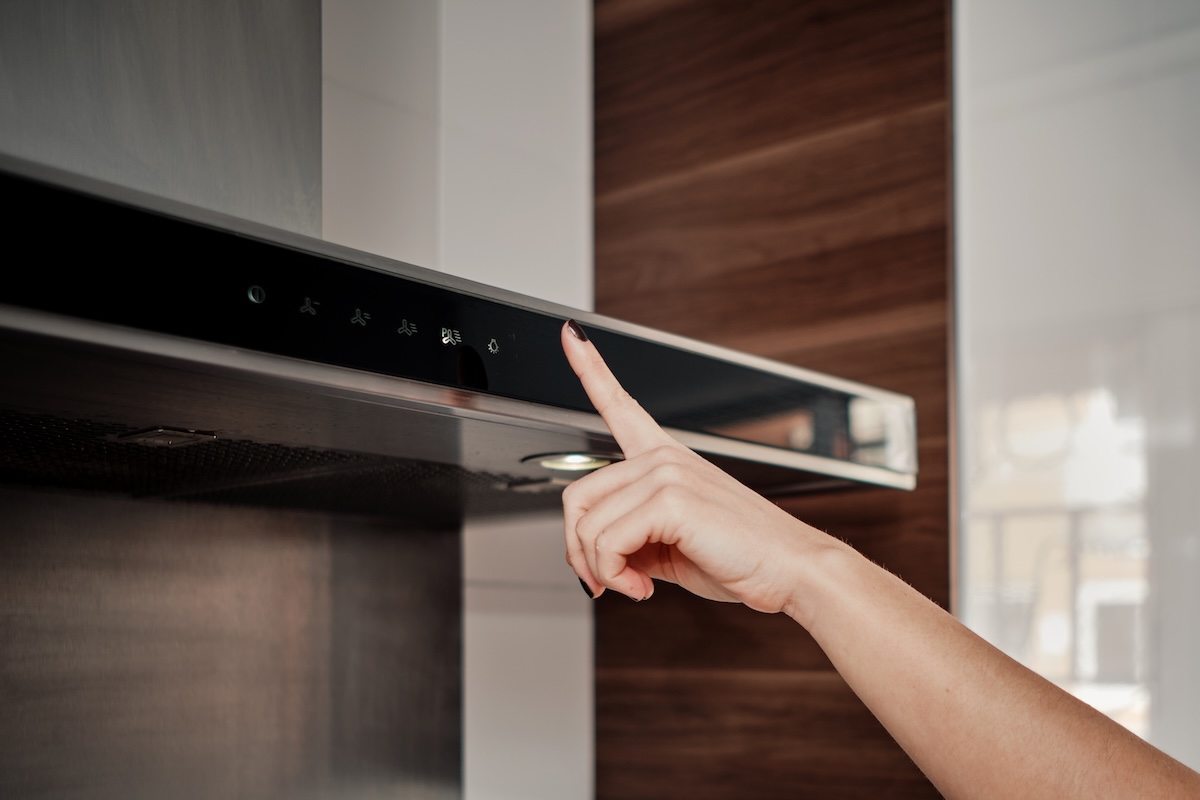
Mapp says that according to the American Society of Heating, Refrigerating, and Air Conditioning Engineers (ASHRAE), the process of cooking introduces water vapor into the air “and can result in up to a 30 percent increase in local relative humidity.” Activities like running the dishwasher or taking long, hot showers also increase humidity in a house.
Rubino recommends that when you’re cooking, “turn on the exhaust fan and crack a window to remove that moisture-rich air.” Likewise, use a good bathroom exhaust fan or open a window when showering to lower humidity inside the house. Lewis recommends “running bathroom fans for 20 minutes after a shower.” A professional can install vents for appliances like clothes dryers and stoves so they vent outside of the home.
Moisture From Soil Under Your Home
The soil on your property might not be the first thing that comes to mind as you wonder why your home is so humid. However, humidity can come up through the soil underneath the foundation of the home. This is called rising damp, often caused by ineffective grading, poor drainage, or a severe storm that results in groundwater and rain accumulating in a home’s foundation. Poor basement insulation and a lack of operable basement windows can compound any issues.
If you live in a rainy climate, make sure that gutters and downspouts work correctly and direct rainwater away from the house to keep moisture out. Awnings above windows and doors can also help keep water out.
[homeadvisor heading=”High humidity in your home can be a sign of a problem” subheading=”Get it taken care of ASAP. Get free, no-commitment estimates from experts near you.” action_text=”Find a Pro”]
Ways to Decrease Humidity In Your House
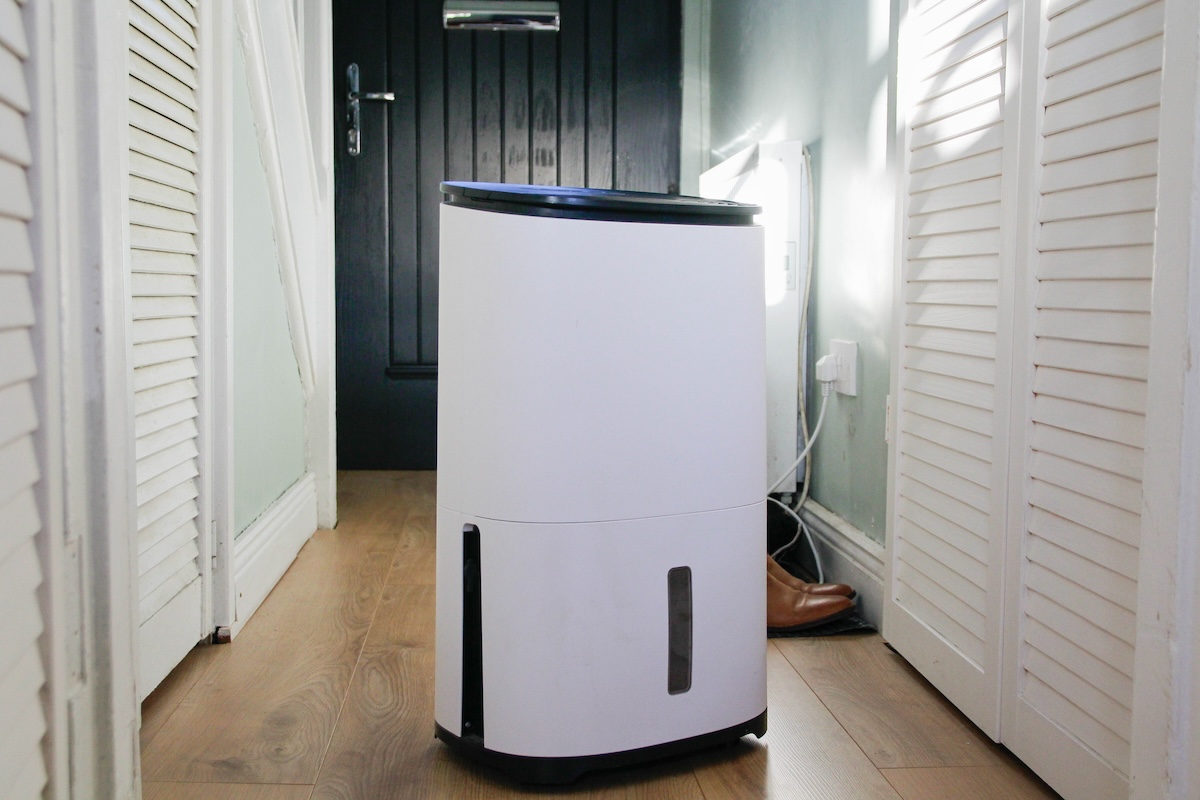
From simple tweaks to your routine to enlisting professionals to help you remedy the problem, there are a number of things you can do to decrease humidity levels in your home. To review:
- Always use exhaust fans when cooking or showering.
- Open windows while showering or cooking (and as often as possible when it’s not raining) to keep air flowing throughout the home.
- Run your HVAC system’s fan function to keep air moving, recommends Alagushov.
- Consider installing a whole-home ventilation system. Energy recovery ventilators (ERVs) exchange stale indoor air with fresh outdoor air.
- Ensure that your home is adequately insulated.
- Consider reducing the amount of carpeting in your home, since it retains moisture. “Opt for hard flooring like tile, vinyl, or sealed concrete instead,” says Rubino.
- Clean up pooled water, and always investigate and repair leaks promptly.
- Inspect your HVAC system and replace it if it is not properly functioning or if it is not the correct size.
- Clean and maintain outside gutters to prevent clogging and water seeping into your home.
- Invest in smart thermostats that can help you check the humidity in your home in real time, “so you can quickly take action to resolve issues as they pop up throughout the day,” says Rubino.
- Check and clean air filters. “A dirty air filter reduces airflow and makes humidity problems worse,” says Lewis.
- Try a standalone dehumidifier in moisture-prone rooms or add a whole-house dehumidifier to remove moisture and track humidity levels throughout your home.
